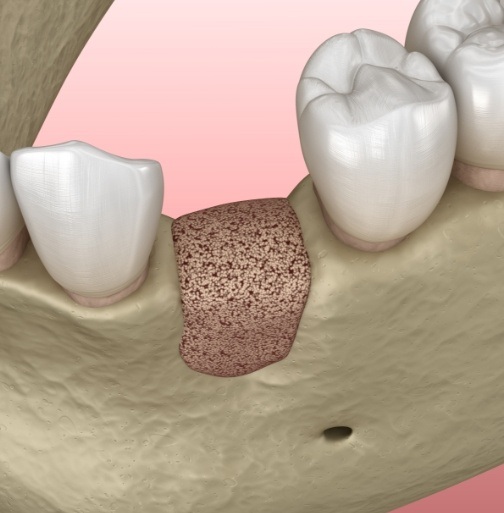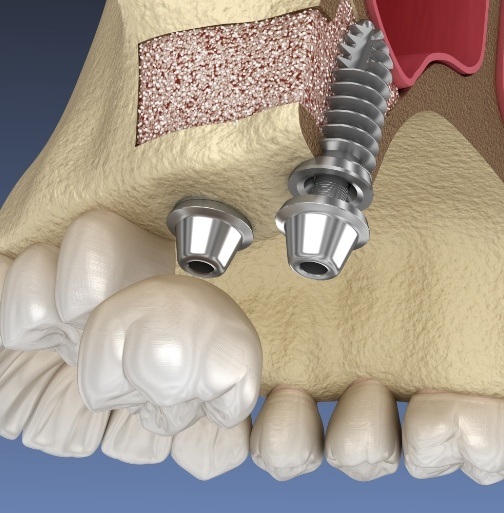Bone Grafting – Newington, CT
Preparing for
Dental Implants
Bone grafting is a procedure that is used to help regenerate or grow bone in places where bone loss occurs. In dentistry, bone grafting can be used after the removal of a tooth when the removed tooth is not immediately replaced. If the tooth remains unreplaced for a prolonged period of time, the jawbone area where the tooth sat will begin to naturally experience bone loss. For patients who are seeking to have a dental implant placed at a later time in life, a certain amount of bone will be needed to help support the implant. If there is not enough bone to support the tooth implant or if the bone is too soft or thin, a dental bone graft can be performed to help replace and strengthen areas of missing or weakened bone.
Why Choose Cedar Mountain Dental for Bone Grafting?
- Advanced Procedures Available In-House
- Full Dental Implant Service Under One Roof
- Multiple Forms of Dental Sedation Available
Why is dental bone grafting used?

Dental bone grafting is used to reproduce areas of bone where there is bone degeneration due to tooth loss. Dental bone grafting can help:
- Replace missing bone
- Support dental implants
- Prevent further bone loss
- Promote bone regrowth
- Support facial skin and muscles
What is involved in a dental bone graft?

Dental bone grafting involves your dentist grafting or transplanting bone or bone grafting materials onto the jawbone after a tooth extraction. There are different types of bone grafts in dentistry, each involving varying materials and methods. One bone graft technique known as socket grafting takes place immediately after the tooth extraction procedure. With the socket grafting technique, your dentist will first remove the affected tooth and then fill the empty socket with a bone grafting material. After around four months and after the bone heals, the dental implant can be installed.
Another bone grafting technique involves transplanting segments of bone into the area where tooth and bone loss are experienced. This technique is used in patients who are suffering from a higher level of bone loss and involves around four to five months of recovery before the dental implant can be installed. As an alternative, your dentist may place a soft powdered bone graft material into the empty socket. Your dentist will then place a thin dental membrane material over the bone graft material. Once the healing process is complete, your dentist can install the dental implant.
What are the benefits of dental bone grafting?

If you have lost a tooth or teeth and are considering dental implants as a treatment option for tooth replacement, your dentist will need to ensure that you have enough bone. If there is not enough bone, bone grafting may be recommended. Bone grafting may offer the following benefits:
- Replace missing bone
- Provide additional support to the dental implant
- Promote bone regrowth



